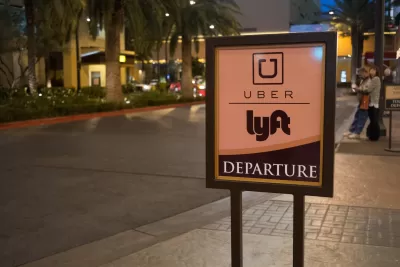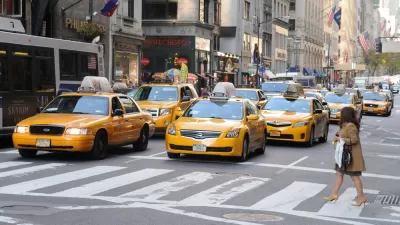A glimpse at Uber's financials show's that the car-hailing app's days of affordability may be shorter than some are expecting

With Uber's rise in popularity it has gained a foothold as an alternate to mass transit for some, pushing out competitors such as Lyft in some markets with hard to beat prices. The Financial Times Alphaville blog takes a closer look at recently released financial data from the company, which shows a substantial subsidy of $2 billion from investors is helping to keep Uber's prices low. As noted in the report, Uber passengers are only paying 41 percent of the actual cost of their trips. Izabella Kaminska of Alphaville writes:
Silicon Valley elites justify the subsidies in the name of monopolistic growth expectations and the building of “eco-systems”*. They believe if monopoly status is achieved, profitability will follow naturally from that point.
Yet, as FT Alphaville has long maintained, there is no reason to assume Uber’s obliteration of local competition across the planet will create a sustainable business in the long term. Costs are costs, even if you’re a monopoly. As long as people have cheaper alternatives (public transport, legs), they will defect if the break-even price is higher than their inconvenience tolerance threshold.
Kaminska notes that the poor returns for the car-hailing aspect of Uber's business model may be why it is now "pivoting its way to viability" with expanded offerings, including Uber Eats.
FULL STORY: The taxi unicorn’s new clothes

Maui's Vacation Rental Debate Turns Ugly
Verbal attacks, misinformation campaigns and fistfights plague a high-stakes debate to convert thousands of vacation rentals into long-term housing.

Planetizen Federal Action Tracker
A weekly monitor of how Trump’s orders and actions are impacting planners and planning in America.

In Urban Planning, AI Prompting Could be the New Design Thinking
Creativity has long been key to great urban design. What if we see AI as our new creative partner?

King County Supportive Housing Program Offers Hope for Unhoused Residents
The county is taking a ‘Housing First’ approach that prioritizes getting people into housing, then offering wraparound supportive services.

Researchers Use AI to Get Clearer Picture of US Housing
Analysts are using artificial intelligence to supercharge their research by allowing them to comb through data faster. Though these AI tools can be error prone, they save time and housing researchers are optimistic about the future.

Making Shared Micromobility More Inclusive
Cities and shared mobility system operators can do more to include people with disabilities in planning and operations, per a new report.
Urban Design for Planners 1: Software Tools
This six-course series explores essential urban design concepts using open source software and equips planners with the tools they need to participate fully in the urban design process.
Planning for Universal Design
Learn the tools for implementing Universal Design in planning regulations.
planning NEXT
Appalachian Highlands Housing Partners
Mpact (founded as Rail~Volution)
City of Camden Redevelopment Agency
City of Astoria
City of Portland
City of Laramie





























